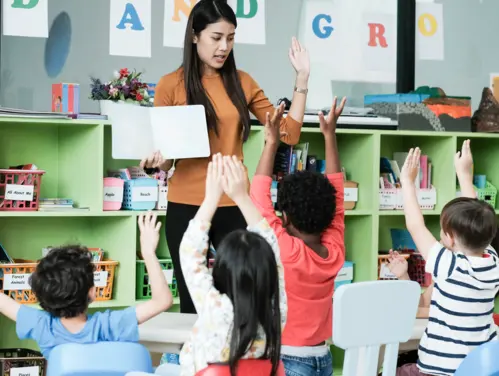Iowa’s educators have at their fingertips a program that enables them to identify individual students who are at risk of falling behind in their learning. While it’s been in use at the elementary level for five years, the scope of the program has grown to now include secondary schools.
The program, called Panorama Student Success, focuses on literacy and math screening for elementary students and also has data available for grades, attendance and discipline referrals. Secondary schools have class grades, attendance and discipline referrals available for their students.
“It’s a really wonderful system and it continues to get better,” said Connor Hood, an education program consultant at the Iowa Department of Education. “Elementary schools use it to help with early literacy so they can identify students who are struggling with reading skills and intervene to get them back on track. Since we started, it has expanded from just early warning for literacy for elementary students to now include math, attendance and behavior or discipline.”
Why the focus on early literacy?
“Students who struggle with reading are far more likely to have other academic problems, drop out at higher rates or may fail to graduate on time,” Hood said. “It often starts with a kindergartener who cannot discern sounds in spoken language or match letters to sounds. If you catch a literacy problem early, when the problem is small, you can change that student’s academic trajectory. But if you don’t, then the student will likely continue to fall further and further behind.”
Identifying problems early on and launching successful interventions can have a life-time impact on a student. This system takes available data and distills it into indicators that can help spot problems early.
The program offers many benefits:
- It identifies the students who may be at risk.
- It enables schools to see the big picture of how their schools are faring, including identifying whether they need to bolster their work to make sure all students receive the same opportunities to succeed.
- The program can identify interventions that are not working so educators can replace them with more effective interventions, and also identify interventions that are most effective in improving student outcomes.
- The system brings in attendance data nightly to help flag issues with absenteeism.
- The program also picks up real-time grades from schools. As teachers post grades in the student information system, educators have the ability to cross reference data, such as comparing grades to absences.
- The Department and Area Education Agencies can also use the data to help support schools. All layers of leadership can look at the big picture to spot areas in which more support is needed.
Every public school in the state and interested accredited nonpublic schools have access to the system.
The program does, however, require some training. The Department will conduct some trainings across the state in the fall, but is also working to build capacity for training across the state.
“We are exploring additional ways to collaborate between the Department and the AEA consultants to increase training and coaching opportunities throughout the state,” Hood said.
In addition, a series of five- and 10-minute videos on how to use the system are being developed with an eye toward self-paced learning on site. There are already numerous recorded webinar training sessions available as well; educators can access the webinars through the Panorama Student Success resource library.
“I know it’s been a real game changer for lots of educators – and students,” Hood said. “Our main goal right now is to increase awareness and get people to start learning about the things they can do with the program. Some of the most powerful features of the system will work best if the school year starts with the school team knowing how to use it.
“To learn more about using Student Success at the secondary level, check with your elementary school team who are already using the system. They should be able to help you through the basic steps to get started.”
For more information, contact Hood at connor.hood@iowa.gov or Greg Feldmann at greg.feldmann@iowa.gov.
Subscribe to receive email updates from the Iowa Department of Education.
